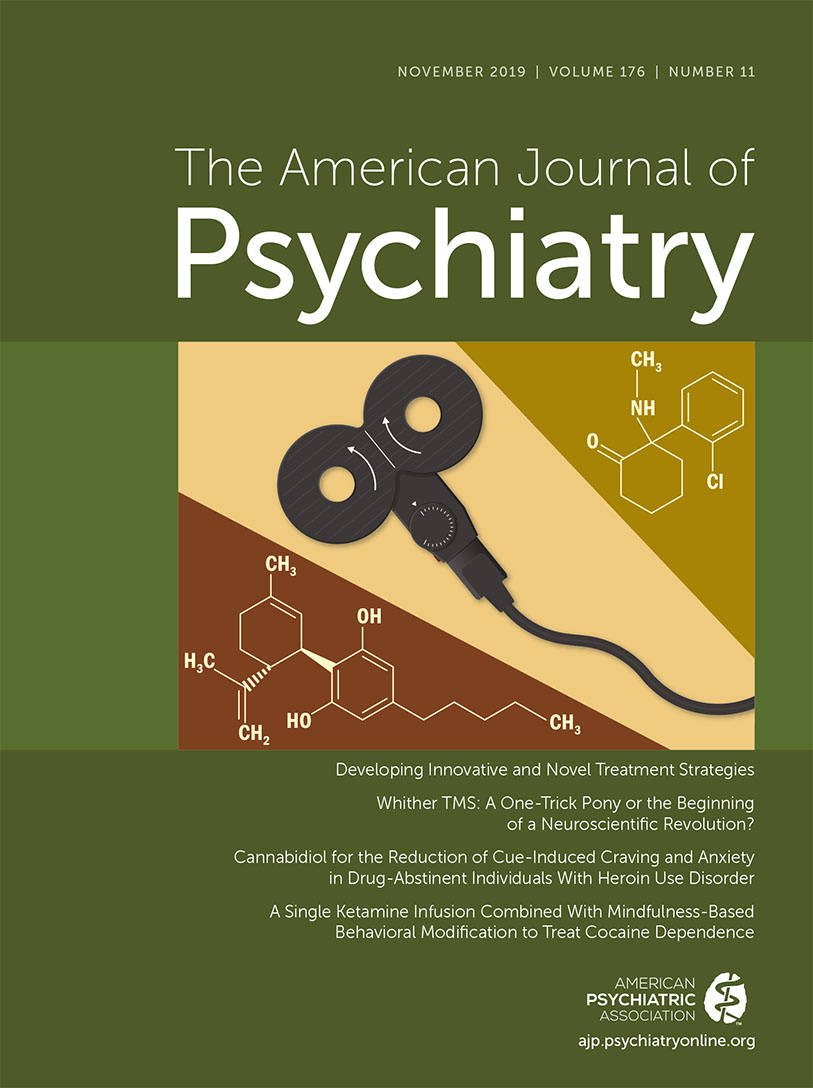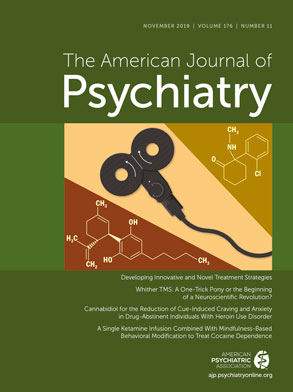Short History
Psychiatry had an early love-hate relationship with TMS soon after Anthony T. Barker developed it in its modern form in 1985 (
4). Some, myself included, were eager to use TMS and perfect it as a treatment (
5–
7). Other psychiatrists were quite skeptical and resistant (
8,
9). TMS involves passing a large but brief electrical current through insulated wires resting on the scalp. The powerful electrical current creates a magnetic field, which penetrates the scalp and skull and then induces electrical currents in the superficial areas of the brain (
10). In 1985, Barker was the first to succeed in making a coil and capacitor powerful enough to reach into the spinal cord (his original target) and also the cortex of the brain. In a generous move, Barker then built several machines and helped place them in leading laboratories around the world. One of those laboratories was the National Hospital for Neurology and Neurosurgery, Queen Square, London, where I spent 1989 learning about the entirely new world of functional brain imaging using positron emission tomography (PET), single-photon emission computed tomography (SPECT), and MRI scanning in psychiatry. Luckily, while I was there, I first saw one of Barker’s TMS machines, only 4 years after they were invented.
The early 1990s were important in psychiatry, as we could now finally image our organ of study with the new tools of CT and then MRI scans. Fluorodeoxyglucose (FDG) PET scans were starting to tell us about regional brain activity and behavior in health and disease. The new imaging tools and the imaging revolution were developing initial maps of pathological regions in the brain for psychiatric diseases, much like neurology had developed for Parkinson’s disease (
11). Thus the environment could not have been better for a noninvasive stimulating tool like TMS: we had maps of where to stimulate and a new technology that allowed us to explore and test. Many psychiatrists across the globe, particularly those working in imaging, like myself, who were developing these maps, could see the potential for a relatively noninvasive tool like TMS with the ability to stimulate the cortex of an awake, alert person (
7,
12–
17). The optimists among us eagerly sought to stimulate cortical regions in patients and see if we could change disease progression. But how to start? There were and still are a dizzying array of complex questions—where to place the coil, how much electricity to deliver, over how long an interval, in what pattern, and so on. In the 25 years since the first TMS clinical trials in depression (
5,
7,
13,
14,
18,
19), we have made remarkable progress in understanding how each of these variables changes what TMS does in the brain. Work in this area is harder than it should be because of certain properties of physics and technological limitations that make it hard to perform preclinical TMS studies. In order to make a TMS coil small enough to proportionately stimulate a mouse or rat brain compared with a human’s, one has to deliver massively larger amounts of electricity through smaller coils—and they explode (
20–
22). Translational neurobiology is not always easy and straightforward!
Why Depression?
Repetitive TMS (rTMS)—a repetitive train of TMS pulses—has had the biggest success as a therapy in treating treatment-resistant depression. Many have wondered why we moved rTMS into the clinic for depression, and not for some other neuropsychiatric illness for which we have a better understanding of the circuits involved, such as stroke recovery, Parkinson’s disease, or tinnitus (
23). One reason was that ECT had provided clear evidence that regional electromagnetic stimulation could treat the illness (
24,
25). Additionally, beginning in the early 1990s, there was an emerging consensus about key cortical and subcortical regions involved in depression, some of which could be directly stimulated with TMS (
19,
26,
27). Activity in some of the regions, moreover, correlated with improvements in symptoms following sleep deprivation (cingulate) (
28) or ECT (prefrontal cortex) (
24,
29). Ironically, some ECT practitioners and researchers were among the most ardent opponents of TMS. Their incorrect logical concern was that TMS was not causing seizures (true) and that seizures were necessary for the antidepressant effects of ECT (also true), so a non-seizure-producing intervention device could not work (false) (
30). (We did not then have the exquisite tools of today, which allow us to show changes in regional functional connectivity that mediate the clinical effects of rTMS [
31].) Luckily, depression turned out to be a superb initial choice.
Methodically uncovering the details required for clinical use, the community of TMS researchers made initial educated guesses about many issues (coil location, intensity, frequency, pulse width, train length, total number of pulses in a day, dosing schedule, and the number of pulses in a treatment course). We were likely both lucky and relatively clever, and the initial choices proved clinically effective (
7,
15,
16). Notably, it took over a decade of work refining these choices in incremental small trials before we were “ready” to launch the first pivotal studies (
32,
33). A TMS industry was born, and this initially led to approval from the U.S. Food and Drug Administration (FDA) in 2008 (
32,
33) and, not long afterwards, widespread insurance coverage for rTMS to treat acute major depressive episodes.
Depending on your perspective, psychiatrists’ uptake of clinical rTMS has been impressive, or disappointing. Historically, psychiatrists as a group may self-select away from specialties in which procedures are performed. rTMS involves a hands-on procedure by psychiatrists, who hire staff and purchase equipment, or send their patients to colleagues who have developed this expertise (
34). The rTMS industry was neither large nor initially well capitalized, so there were no national advertising campaigns until recently. Despite these obstacles, there are now at least seven machines with FDA clearance, and TMS is available clinically across the globe. TMS is now daily producing remissions from depression and saving lives.
TMS thus represents a paradigm shift in psychiatry. It is not a talking therapy, does not involve administration of medications by mouth or intravenously, does not involve seizures, and modulates circuit activity in the brain. Because it is focal and noninvasive, it produces no systemic side effects and no drug-drug interactions. It thus is a good choice in medically complicated patients, and it does not involve anesthesia or have deleterious cognitive effects.
Viewed differently, clinical use of rTMS has been disappointing. Over the past 10 years, rates of suicide and depression have increased. TMS has not had a large public health impact on these. Moreover, the FDA-approved treatment requires daily treatments for 6 weeks, and each treatment takes about 30 minutes to an hour. It is highly inefficient, and thus relatively expensive. Maybe TMS is just a one-trick pony?

